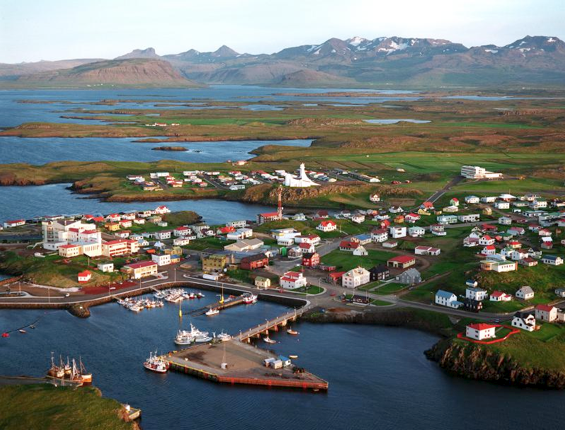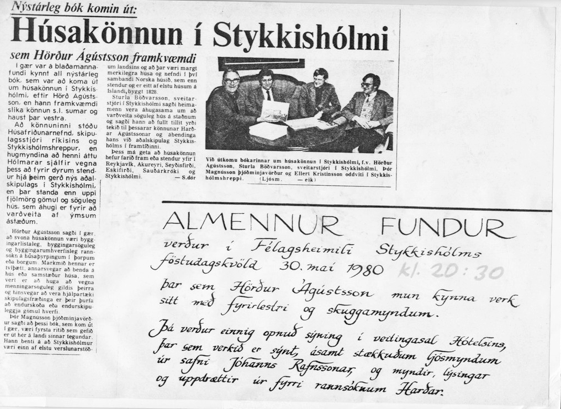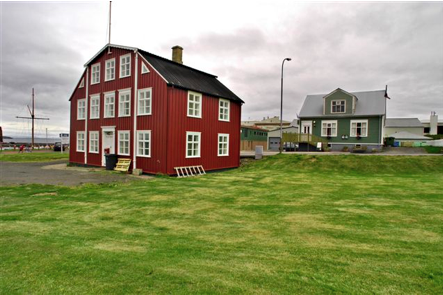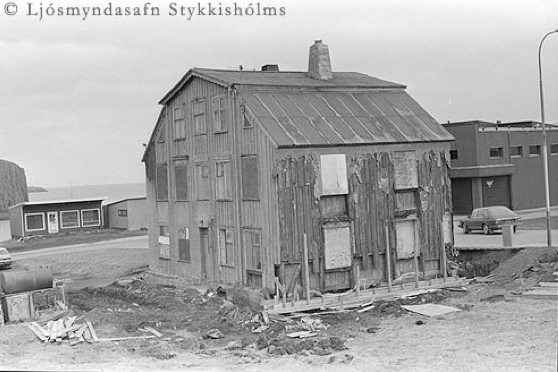The Story of the House
/Sturla Böðvarsson, the mayor of Stykkisholmur, writes about Egilsens House and the events leading up to the house being restored.
The four-hundred-year development of a settlement built on the Danish tradition
As is written in the 'History of Stykkishómur' by the historians Ólafur Ásgeirsson and Ásgeir Ásgeirsson in 1997, the settlement and development of Stykkishólmur can be traced back to 1596, when the first merchants settled there and started business. From there, cultural influences from Danish, German and Dutch merchants began to take hold. In the beginning, trade was the main source of employment for those who settled in Stykkishólmur. As the merchant business grew the development of “þilskip” (literally “ships with bulkheads”) followed, and the town's base strengthened and broadened, encouraging further development. Through this, Stykkishólmur of course retained its connections to and reliance on Snæfellsnes, settlements around Breiðafjörður and island farming, all of which were a veritable treasure chest for the area.
By 1900, Stykkishólmur was first and foremost a merchant centre, with local offices closely connected to Danish society through business and trade. Stykkishólmur was also the transportation and service centre for the Breiðafjörður area and for Snæfellsnes as a whole. It was the epicentre of West Iceland, being the county seat as well as the area's health care centre for the area, hosting doctors and a pharmacy. All of this led to a rapid development of the the fascinating settlement by the islands, which exported horses, goose down and wool with good economic results. Towards the end of the 19th century and the beginning of the 20th century—when the Independence Movement began to truly take hold among Icelanders, particularly among supporters of parliamentary president Jón Sigurðsson—the people of Stykkishólmur had developed their homes quite well, especially compared to what was deemed acceptable elsewhere in Iceland at the time. Aesthetically speaking, the town still very much enjoys the fruits of those 19th century developments, as is evident overlooking it. The population of Stykkishólmur in 1900 was at around 300, a remarkable increase from only 100 residents just 50 years prior.
Stykkishólmur’s development in the mid-1970s can be attributed to numerous factors, but mostly to the diversity of services on offer within the community, which had a powerful impact on the surrounding area. In addition, the fishing of scallops and the building of more fishing boats began to take off very successfully. In this way, the town began to grow: the hospital was expanded with a health care centre, more apartments were built, as was a new school, church, sports hall, swimming pool, community centre, play-school, home for the elderly and Hótel Stykkishólmur. Water treatment facilities were also added, providing heat and hot water to local homes. Around this time, a new town council hall was also built.
Town planning and house conservation
Interest in preserving some of Stykkishólmur’s older houses began to really pick up in the 1970s. When the author became mayor, many of the older houses in town were in very bad shape, and there was little upkeep. The amount of resources available to homeowners in the area varied greatly, so many of the older houses went neglected. In 1976, town council began to examine which old houses should be torn down to make way for newer buildings, and to widen the streets and set down pavement. In my first years as mayor I was told: “Show some diligence, because you will be remembered if you let these old houses get torn down.” I was rather alarmed by this, because I had a great interest in preserving and restoring the old houses, which added great charm to the area.
I thus began to show preservation more attention and was, among other ways, appointed to the The National Architectural Heritage Board, representing The Association of Local Authorities in Iceland. In keeping with this shift in values, the local municipality agreed to restore the apartment house on Aðalgata 2, also known as Egilsens House, and the property was bought with the agreement to restore it. One could say that this agreement marked a milestone in building preservation in Stykkishólmur, and set into motion the preservation of the older houses that give the town its special charm today.
Egilsens House was built in 1867. The owner and builder of the house was Egill Egilsson, son of rector and poet Sveinbjörn Egilsson. Egill was an influential person in Stykkishólmur, as a merchant and a member of parliament, at a time when the time was growing as the epicentre of Breiðafjörður. At the time that the decision to restore the house was made, there was only one person living there—Eyjólfur Bjarnason—who was also the majority owner of the place. When I came to him with plans for restoration, he said that he believed the house was fine the way it was, and he saw no reason to restore it. But I visited him many times, drank coffee with him, spoke with and listened to him. In the end, he signed a contract to let the town buy his share in the house, under numerous conditions, among them a place for him in the local home for the elderly—where he would be provided with “edible Icelandic food”—that he would be allowed to bring his work tools with him for carpentry, and that I would care for his furniture.
In the wake of this agreement, young and optimistic people took it upon themselves to restore the house. In lieu of pay, they received a share in the ownership of the house. Everyone was encouraged to take part in the house’s restoration. In the end, Stykkishólmur received a special European award for environmentalism and the restoration of older houses.
There is no doubt in my mind that we did well in the restoration of the old homes, with the help of those who showed respect for those who have lived there before, and the new owners have made Egilsen’s House splendid once more. In light of this story it is a pleasure to see that Egilssen’s House is still a part of the restoration of daily life, in its new role as a hotel. The new owners have seen to it that the charm and spirit of the house provides a warm welcome to those who arrive as guests at Hótel Egilsens.
–Sturla Böðvarsson
The author was mayor of Stykkishólmur 1974 to 1991 and from 2014 to the present. He was the town councilman from 1991 to 1994. He has also served as an MP, a government minister and as the Speaker of Iceland's parliament, Alþingi.







